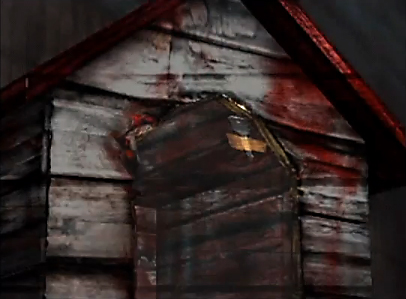
Featured Blog | This community-written post highlights the best of what the game industry has to offer. Read more like it on the Game Developer Blogs or learn how to Submit Your Own Blog Post
The Weird Designers
Puzzles in games can give great meaning to the game itself. Sometimes they are harbingers of nihilism, too.

What but design of darkness to appall?—
If design govern in a thing so small.
Robert Frost, "Design"
It happened while playing Silent Hill—the first one, for PlayStation. I guided Harry Mason through the abandoned town of Silent Hill, sneaking past terrible things in the mist as he searches for his missing daughter.
Eventually Harry realizes he must access a certain house in order to continue his quest, and tries the door. This being a videogame, a puzzle is required to open it. A children's note left in crayon says to check the doghouse, and indeed, the doghouse in the front yard is deluged in blood, and harbors the key to the house.
Once inside, Harry is quick to find the backdoor locked—his only portal to progression. This being a videogame, this door takes three keys to unlock. Thankfully, someone had left a map by the door marking the location of all three keys, carefully hidden throughout the residential neighborhood of Silent Hill. I want to talk about only one of those keys.

Always leave a spare in the doghouse
If you're with me so far, that means that someone, evidently a child (possibly Harry’s own child, who, after all, has a fear of dogs and a full crayon box), created a series of challenges, the point of which implies a disturbing question.
Imagine my surprise when I guide Harry to fetch the final key, and come upon a basketball court. I was no longer left to wonder why the doghouse was drenched in blood, though I had assumed it was because a level designer was having a macabre day.
Someone, a child, had severed the dog's head, carried it to the basketball court, and preceded to play with it as a ball. The bloodied mess was left on the cement, under the blood stained hoop. Inside the dog’s mouth is the key. Harry takes it and leaves. I feel uneasy.
Who could have had the resources to make that puzzle? Why did it hide the key? So rarely is the design of the game explained within the fiction of the game itself. As gamers, we accept this peculiarity without question.
Who built, and designed the dangerous, trap filled dungeons in all those Zelda games? Truly some ingenious ancient race. And yet that doesn’t make sense exactly. The real truth, and the truth that most gamers accept, is, "It's just a game". And that is if the question is even asked at all. These are videogames at their most videogamey.
One of the games to mostly escape this trend of inexplicably existing challenges is Ico. While still containing the puzzle-staple of pushing boxes and pulling levers, most of its challenges make sense within the game’s world. Players navigate a decrepit castle; stairs and bridges that were once available have now crumbled because of time and decay. Players must shimmy across ledges, climb windmills, or make their own bridges if they want to progress.
Meanwhile, a malevolent queen seeks to stop your escape, providing some of the meta puzzles over the course of the game. The shadowy creatures that the player must fight are also explained, perfectly, within the game's lore, and all this from a game with roughly ten lines of understandable dialogue (the rest of the game is spent conversing with a non player character in a made up language, and subtitles are not provided).
In Anh Hung Tran’s I Come With the Rain, someone shoots a dog and then beats its owner to death with it. It is the epitome of gratuitous, unnecessary violence, when a simple bullet to the head would have sufficed.
An act like this makes a statement. The problem with the dog-head puzzle is that it is so similarly elaborate and unnecessarily sinister that the "It's just a game" reasoning ceases to work. Silent Hill’s puzzles are so deliberate that they could only exist because something made them, none of the logical environmental puzzles of Ico.
But it is a sadistic entity who designed Silent Hill’s puzzles. It didn't want to stop progress entirely, or it would have simply destroyed the key. Its goal is only to impede, and so creates twisted time wasting fetch quests. It’s a clear message: “I’m toying with you.” It is disquieting. And yet it doesn't make any sense why something is toying with you. I am reminded of a cat playing with a mouse.
And yet that's not to say that Silent Hill is wrong. There's something to that, to not understanding, to being the rat in the maze. It takes the "videogamey" logic and complicates it, makes the player feel uneasy as he is forced to confront a philosophical problem.
Few games are able to do that. Just make sure that that question is something the player is supposed to ask. As game developers, we need to remember that the more story-focused the game, the more our puzzles need to reflect meaning. Silent Hill puzzles have great meaning, possibly, because much of what takes place in its world is metaphor made incarnate.
One interpretation of the Robert Frost poem, “Design”, yields that it is a sinister and not a benevolent god that governs the universe. Much creepier than not believing in any god is to believe in one that is not inherently good. This is the kind of god that toys with you for fun, or creates elaborate dioramas of carnage for little discernable benefit. Evidently, the gods who inhabit our videogames are one and the same.
About the Author(s)
You May Also Like







.jpeg?width=700&auto=webp&quality=80&disable=upscale)








